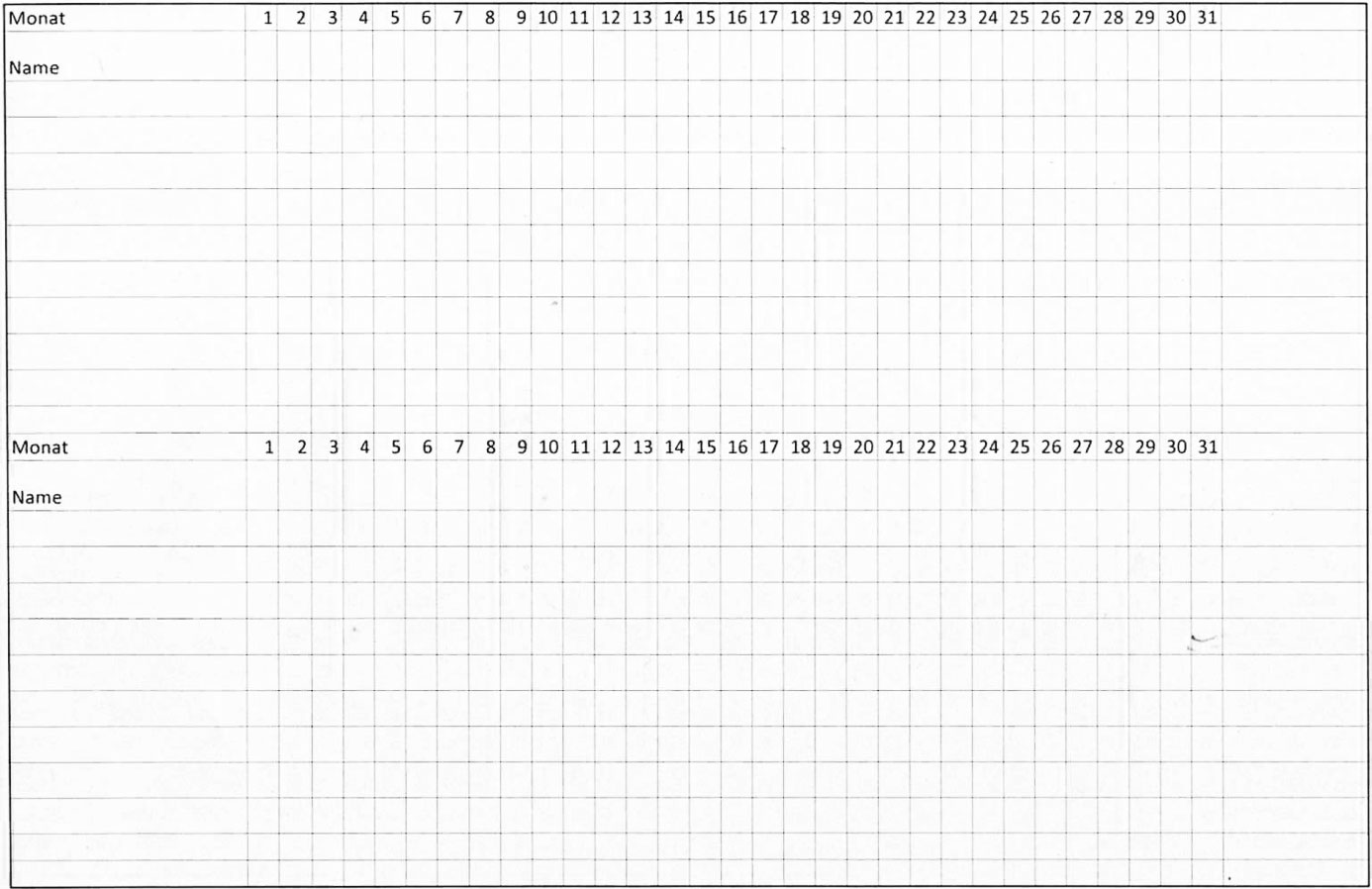DLG Expert Knowledge 384: Managing staff on dairy farms
DLG expert knowledge 384
Authors:
- DLG committee for milk and beef production
- Dr. Friederike Buschsieweke, agro prax Gesellschaft für Tiermedizin und Betriebsbegleitung mbH
- Dr. Jürgen Rothert, agro prax Gesellschaft für Tiermedizin und Betriebsbegleitung mbH, Ankum
- Ulrich Westrup, Westrup-Koch GbR Bissendorf, Member of the DLG committee for milk and beef production, Chairman DLG Competence Center Agriculture and Vice President
Content
Introduction
The organization chart – define areas of responsibility on the farm clearly and structure communication
The workplace description – basis for job advertisements and clear allocation of tasks on the farm
Work plans for the individual function areas – “Hectic operative processes are a sign of intellectual standstill”
The shift plan – each staff member knows his working times
Standard operating procedures – describe work processes in detail in order to achieve a standard quality of work
Communication – “Uninformed staff make the most expensive decisions”
Conclusion
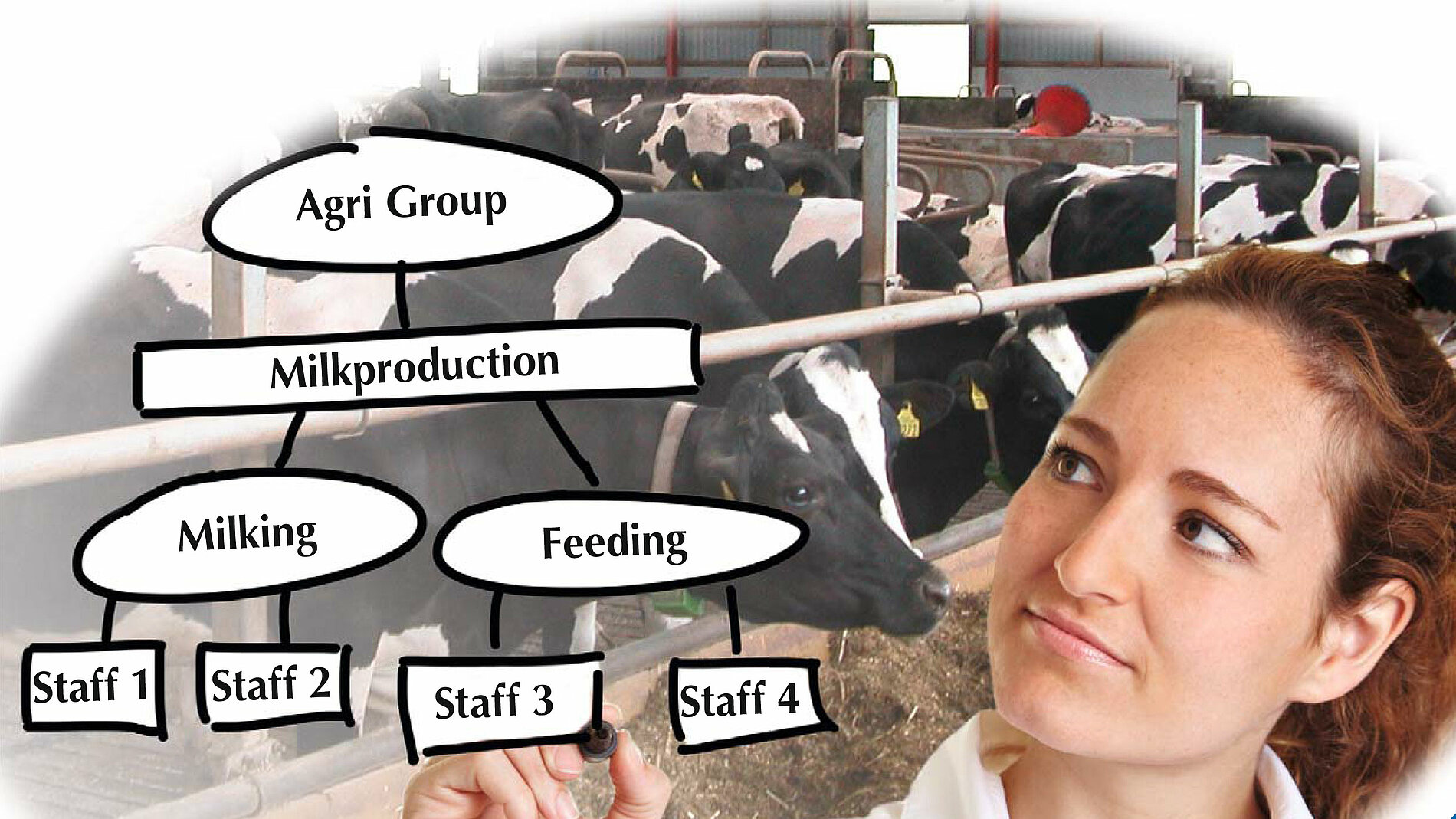
1. Introduction
Managing staff on dairy farms can be understood to mean clear fixing of areas of responsibility, defining tasks plainly, structuring and standardizing work processes, coordinating operational activities and cycles, and clear communication. While structured work organization is already firmly established in industry, it has only become increasingly important in milk production as a result of farms specializing, enlarging their herd sizes and employing more workers.
The results of working time evaluations on dairy farms of widely varying sizes show that the farms differ substantially in their working time requirements. For example, the results of evaluations range between 35 man-hours and 65 man-hours per cow and year including youngstock (DLG-Spitzenbetriebe Milcherzeugung 2012). Taking a herd size of 150 cows and an hourly rate of Euro 15.– (DLG-Spitzenbetriebe Milcherzeugung 2012) as a basis, this leads to a difference of Euro 67,500.– between farms with a working time requirement of 35 man-hours and those with 65 man-hours per cow and year! This simplified model calculation reveals that efficient deployment of labour distinctly reduces labour costs, which is crucial particularly with regard to increasingly fluctuating milk payment rates and rising feed prices, and moreover frees resources for other work on the farm or for leisure time. Another factor picked up by the working time studies, alongside the great scatter in working time requirements, is that many farm managers tend to underestimate their own farm work input. Especially on farms that do not record working times, the values assessed are too low.
The specialization in milk production and the growing herd sizes are leading to both a rise in demand for staff on the labour market and a change in the requirement profile of the applicants. On the one hand farms seek well-trained staff who understand the complex connections involved in milk production and put these into practice on the farm, and in addition can manage and guide staff. The title increasingly used for this work is that of herd manager. On the other hand they seek staff who can carry out (“simple”) routine work after corresponding initial training, such as for example milking or driving the cows. Workers from other sectors or unskilled staff are increasingly being employed for routine work. Especially where people from other sectors and unskilled staff are deployed, structured labour organization and the application of standardized work processes are important to be able to both ensure work and product quality on the farm and train staff optimally.
Instruments from corporate management (industry) can be taken as a basis for introducing and implementing structured managing staff on dairy farms. These are the organization chart, the workplace description, work and shift plans and standard operating procedures. In addition, farm managers must build up an operational communication system that standardizes exchange of information within the farm and with third parties (advisors, veterinarians, inseminators) and contributes substantially to the success of the farm. In view of the major structural difference between dairy farms – operational goals, technical resources, basic diet production, heifer rearing and management – however, the introduction and implementation of work organization always remains an individual solution for each specific farm.
Structured work organization should enjoy high priority on “large farms” that have already completed or are planning the growth stage. While the “hardware” in the cow shed is generally planned right down to the smallest detail and investment costs are calculated for different milk prices, the “farm software”, the guidance for the management and work organization for the new operative frameworks is often lacking. The “obvious difference”, the fact that a herd of 400 cows present different requirements for farm organization than a herd of 150 cows, is often underestimated and finally compensated by overtime and paid for with unsatisfactory results. However, family farms too, who are frequently affected by the work trap, can achieve their objectives better with structured work organization and create free time for themselves. That is why introducing work organization is independent of the farm size and instead depends on the open-mindedness of the farm manager for giving himself and his staff a new and more efficient structure. Furthermore, examining one’s own operative work organization often helps to reveal weak points and to develop potentials for improving efficiency. Structured work organization can also lead to motivating staff by creating regular working hours (work-life-balance) and clear tasks.
“Work at your company – not only in it”
2. The organization chart – define areas of responsibility on the farm clearly and structure communication
The organization chart provides a graphic picture of the organizational structure of the enterprise and defines clearly the areas of responsibility of the persons employed there. For each individual farm, the management, the heads of the different branches of business and the functional areas of the farm, such as feeding and milking in the milk production sector, are shown in the organization chart and staff or staff groups are allocated to the relevant areas of responsibility. In addition to the areas of responsibility and the distribution of tasks, the communication avenues on the farm and the hierarchy are shown. Whereas the authority to issue instructions is only shown on a top-down basis, the flow of information on the organization chart runs from the farm management to the individual staff members, as well as from the staff members to the management and thus in both directions.
The following figure shows an organization chart for a farm that covers various sectors of business.
The organization chart shown here covers the complete farm with all its business sectors. As of the third level of the hierarchy, the focus has been placed on the dairy cattle husbandry sector. For this figure, an organization chart was selected that both shows the individual areas of responsibility on the farm and lists those persons who are responsible for each area. If more than one person (deputies too) is responsible for an area, this can be listed appropriately in the chart.
In the next figure the milk production sector has been isolated from the organization chart and shown in more detail in order to illustrate how the areas of responsibility can be broken down for the dairy sector.
The organization chart shows by way of example how the areas of responsibility can be broken down in the farm milk production sector. The breakdown of the areas of responsibility should be selected depending on the farm size and the number of persons. For example, if the farm manager and one further staff member are responsible for the area of milk production, it can be sufficient to simply represent two levels of hierarchy in accordance with the distribution of tasks to clearly define the areas of competence.
A crucial aspect is that the need of an organization chart for a farm does not depend on the farm size. The organization chart is critically important both on family farms – with and without outside labour – and for contractors in order to define clear areas of responsibility. An organization chart can help to avoid statements such as, “I didn‘t know that”, “That’s not my responsibility”, or “I thought someone else was doing this”.
3. The workplace description – basis for job advertisements and clear allocation of tasks on the farm
The purpose of the workplace description is to document a precise list of all the tasks and responsibilities of each individual staff member in the enterprise in writing. This gives each staff member a clear task profile and a fixed and clearly defined work area. For the farm, the existence of workplace descriptions for all areas of responsibility provides an overall picture and an overview of whether all the tasks are assigned. Furthermore, the workplace description forms the basis for job advertisements and the appointment interview, the contract of employment and the cooperation between the staff member and the farm management. It can also be used to evaluate the work performed by the staff member.
A workplace description should contain the following information:
- Designation of the workplace
- Tasks and work to be carried out
- Authority to issue instructions – upward and downward in the hierarchy
- Deputizing arrangements in the event of holiday or illness
The figure below shows the workplace description for a herd manager. As the tasks of a herd manager vary widely from farm to farm due to the differences between farms, the workplace descriptions must be drawn up separately for each individual farm. Accordingly, the workplace description shown below can only serve as an example.
| Documentation |
• Herd administration in the “herd” programme • veterinarian record book • Stock register • Milk monitoring • … | |
| Herd management |
• Animal health, animal surveillance/observation • Veterinary treatments • Oestrus observation/insemination • Cow comfort: resting, air, water, feed • … | |
| Feeding management |
• Feeding • Monitoring of ration mixing (quantities, composition, feed quality, feed presentation) • Feeding trough management • Determining the DM intakes • … | |
| Milking/milk observation |
• Milking • Post-monitoring • Surveillance of the milking system/cooling • Milk yields per cow/per cubicle space/per cowshed • … | |
| Supplies/stock management |
• Feedstuffs • Spare parts • Cleaning agents • Miscellaneous materials • … | |
| Work allocation in consultation with the farm manager |
• Workers • Working times: daily, weekly • Holiday planning • Work requirement • … |
Figure 3: Excerpt from a workplace description for a herd manager (source: agroprax)
The farm manager should draw up workplace descriptions. They must be discussed with the holder of the position during the interview for the job. They should be filed centrally and made available to the respective staff member. As the operative frameworks are not static, but instead dynamic – number of staff, training level of staff, number of cows, farm targets – the workplace descriptions should be reviewed at regular intervals and updated to match the prevailing frameworks.
It should be pointed out here that it appears helpful to make a distinction between a herd manager and a herdsman by analogy with the American approach. While the herdsman works directly and solely on and with the cattle, the herd manager assumes additional tasks in the areas of staff management and controlling. This distinction facilitates selection of staff for the farm and defines the scope of work of the staff member from the start.
4. Work plans for the individual function areas – “Hectic operative processes are a sign of intellectual standstill”
The goal of work plans is to coordinate the tasks to be performed on a farm with each other and if possible to allocate fixed times for them. Depending on how the farm is managed, the tasks are set out in daily plans, weekly plans, monthly plans or annual plans. For example, the task “milking” will be entered in a daily plan. If the farm milks twice, fixed milking times are entered in the daily plan in the morning and the evening. In order to be able to allocate the time required – from preparing the milking parlour to the end of the milking operation including cleaning of the milking parlour – in the daily plan, the time actually taken should first be measured. The individual tasks such as preparing for milking, the milking process and cleaning of the milking parlour should be recorded and documented separately, so that if appropriate various members of staff can be assigned at different times. Feeding, which is also carried out one to several times a day, should also be recorded as a fixed task at fixed times in a daily plan. As farms generally strive to provide the animals with fresh feed after they return from the milking parlour, the two tasks “milking” and “feeding” should be coordinated and harmonized with each other.
The tasks “pregnancy examination”, “drying off”, “cleaning and disinfecting the calf igloos”, “hoof care” and “foot baths”, for example, are tasks that can be entered in a weekly work plan. Here too, the on-farm operations must be taken into account and the tasks coordinated with each other. For example, it may be expedient to carry out hoof care on Wednesdays and to dry off animals on Thursdays. The dry cattle can be hoof trimmed again before the start of the dry period and start this period with good hoof health. Times for the visit by the vet or group rotation should also be taken into account in a weekly work plan.
Tasks such as for example changing claw piece liners can be entered in an annual work plan.
The following figure shows an example of a daily work plan. The names of the relevant staff member and the time required are to be entered in the respective lines.
| Feeding | Milking | Repro + health | Calves | Cattle | Office | |
| 0.00 – 2.00 | ||||||
| 2.00 – 4.00 | ||||||
| 4.00 – 4.30 | ||||||
| 4.30 – 5.00 | ||||||
| 5.00 – 5.30 | ||||||
| 5.30 – 6.00 | ||||||
| 6.00 – 6.30 | ||||||
| 6.30 – 7.00 | ||||||
| 7.00 – 7.30 | ||||||
| 7.30 – 8.00 | ||||||
| 8.00 – 8.30 | ||||||
| 8.30 – 9.00 | ||||||
| 9.00 – 9.30 | ||||||
| 9.30 – 10.00 | ||||||
| 10.00 – 10.30 | ||||||
| 10.30 – 11.00 | ||||||
| 11.30 – 12.00 | ||||||
| 12.30 – 13.00 | ||||||
| 13.00 – 13.30 | ||||||
| 13.30 – 14.00 | ||||||
| 14.30 – 15.00 | ||||||
| 15.00 – 15.30 | ||||||
| 15.30 – 16.00 | ||||||
| 16.00 – 16.30 | ||||||
| 16.30 – 17.00 | ||||||
| 17.00 – 17.30 | ||||||
| 17.30 – 18.00 | ||||||
| 18.00 – 19.30 | ||||||
| 19.30 – 20.00 | ||||||
| 20.00 – 20.30 | ||||||
| 20.30 – 21.00 | ||||||
| 21.00 – 22.00 | ||||||
| 22.00 – 24.00 |
Figure 4: Diagram for a daily work plan (source: agro prax)
The tasks are allocated to the respective staff members on the basis of the organization chart and workplace descriptions. Alternatively, personal work plans (Figure 5) can be drawn up in addition to the work-related work plans. These allocate clear tasks to the respective staff members.
| Time | Monday | Tuesday | Wednesday | Thursday | Friday | Saturday | Sunday | |
|---|---|---|---|---|---|---|---|---|
| 9.00 – 10.00 | Uncover silage | Uncover silage | Uncover silage | Free | Uncover silage | Uncover silage | ||
| 10.00 – 11.00 | Clean and disinfect calf hutches | Work by agreement | Work by agreement | Scatter straw in pens | Scatter straw in pens | |||
| 11.00 – 12.00 | Clean and disinfect calf hutches | Sweep yard, carry out repairs | Scatter straw in pens | Look after cubicles of young cattle | ||||
| 12.00 – 15.30 | Milk | Place litter in cubicles | Milk | Milk | Milk | |||
| 16.00 – 19.00 | Work by agreement | |||||||
| 19.00 – 22.20 | Milk | Milk |
Figure 5: Personal work plan (source: agroprax)
5. The shift plan – each staff member knows his working times
In order to be able to plan working times for staff and take holiday wishes into account, a shift plan should be drawn up for each month. The shift plan for the next month should be handed out to the staff or posted centrally on the farm at the latest in the last third of the month. Depending on the individual farm, the holiday planning can be recorded at the beginning of the year or monthly and be taken into account accordingly. If a staff member is unable to work due to illness, it should be possible to deploy a substitute at short notice. It may expedient to assign “stand-ins” here.
6. Standard operating procedures – describe work processes in detail in order to achieve a standard quality of work
The standard operating procedures (SOP) can be considered as a crucial stage of work organization. Standard operating procedures define the detailed procedures to be adopted for the individual tasks on the farm. They represent the core of actual performance of work and determine its quality. Operating procedures always develop from the daily work of the farm. As a matter of principle it is possible to make distinctions between standard operating procedures for systems (milking, feeding), for procedures (preparing the milking parlour, milking, cleaning) and for work steps (cleaning, pre-milking, attaching the teat cup, dipping). Independently of the task for which they are drawn up, the SOPs should contain the following information.
The farm manager always draws up the standard operating procedures. He defines the goals and the individual work steps and determines the depth of detail to be implemented in each work process. Generally, it can be said that the more detail is contained in an SOP, the more uniformly the work can be carried out by the staff members and the farm manager’s specifications can be implemented. Optimally, the farm manager has already carried out the work himself and can realistically assess the implementation and the time required for the individual work steps. Well prepared standard operating procedures form the basis for drawing up the work plans.
The following approach can be adopted for drawing up a standard operating procedure:
- Specify the targets
What targets are to be achieved with the SOP, e.g. reaching a higher milk yield; setting guide values; defining measurable characteristic quantities and targets - Document and describe the work process in individual steps, preferably by observing the process
Carry out the documentation in writing; select the format (individual step format, hierarchical format, graphic format – see remarks below) - Give draft SOP to the staff for assessment
Staff should contribute their own experiences - Give draft SOP to a consultant / externals for assessment
Externals should review the draft SOP for factual accuracy - Test the SOP in practical use and modify it if necessary
Third parties / outsiders / non-professionals or staff should first apply the SOP in order to be able to examine the practicability objectively - Post the SOP at the location of the work process and file it centrally
The SOP can only be readily applied if it is posted conspicuously; always keep it up-to-date - Instruct staff about the respective processes
Instruct the staff and explain “why”; conduct staff training sessions on the basis of the SOP - Conduct annual review and evaluation
The SOPs should be reviewed at least annually to ensure that they are up-to-date and if necessary they should be revised
Figure 8: Process for producing a standard operating procedure
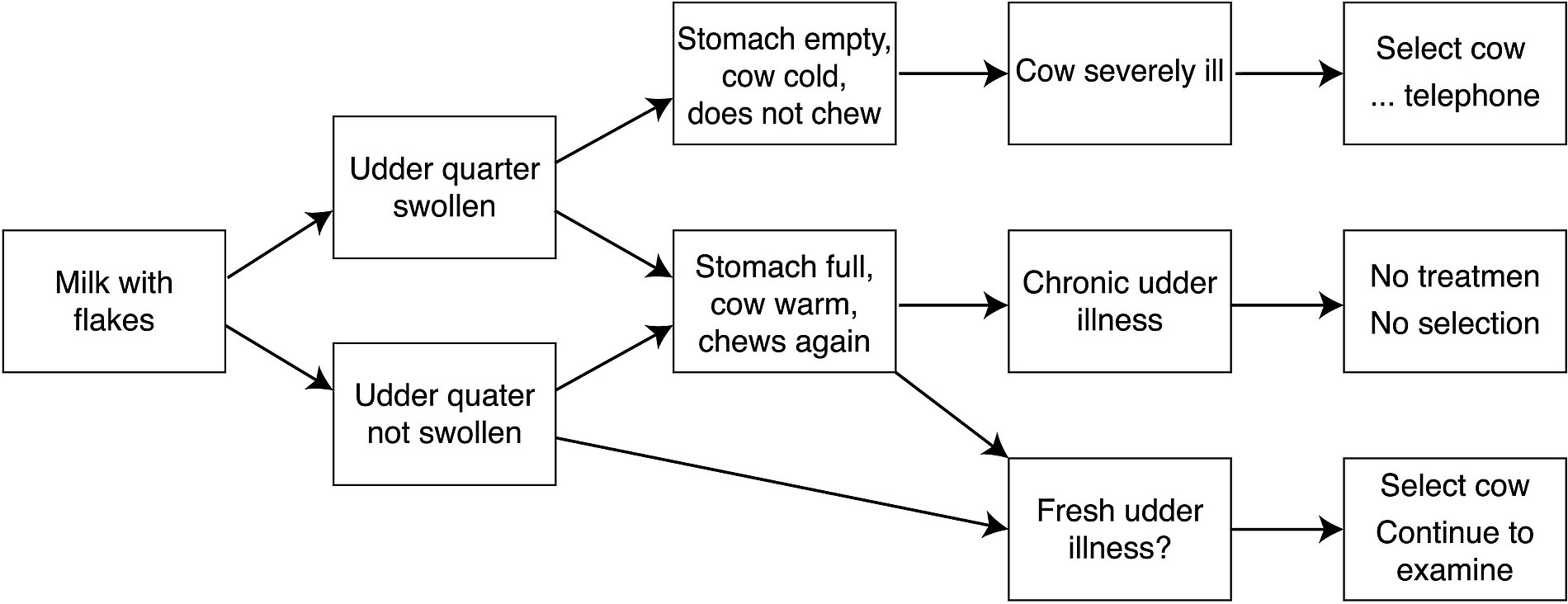
Producing standard operating procedures requires know-how and, especially during the initial implementations, time as well. One should not be put off by this, however, as the time taken to produce the SOP can save time subsequently when it is implemented on the farm and it can sustainably improve the quality of work.
Not all the work in dairy farming can be converted easily into a standard operating procedure. The following work areas can, however, be implemented well with a little practice: treatment plans, work steps for milking, rearing calves and young cattle, calving area, feeding, driving, insemination and hoof care.
A distinction is made between three different formats for producing an SOP – the individual step format, the hierarchical format and the graphic format (flowchart). The graphic representation of an SOP, for example, shows the work to be carried out in a clear visual fashion and is generally easily understandable. However, as the number of branches involved increases, it tends to lose clarity. The format should be selected in particular on the basis of the number of decisions to be made during a work process. That is why the work steps should first be documented and the decision on the format should then be selected on the basis of the depth of detail required.
The following figures show three different standard operating procedures representing the different formats.
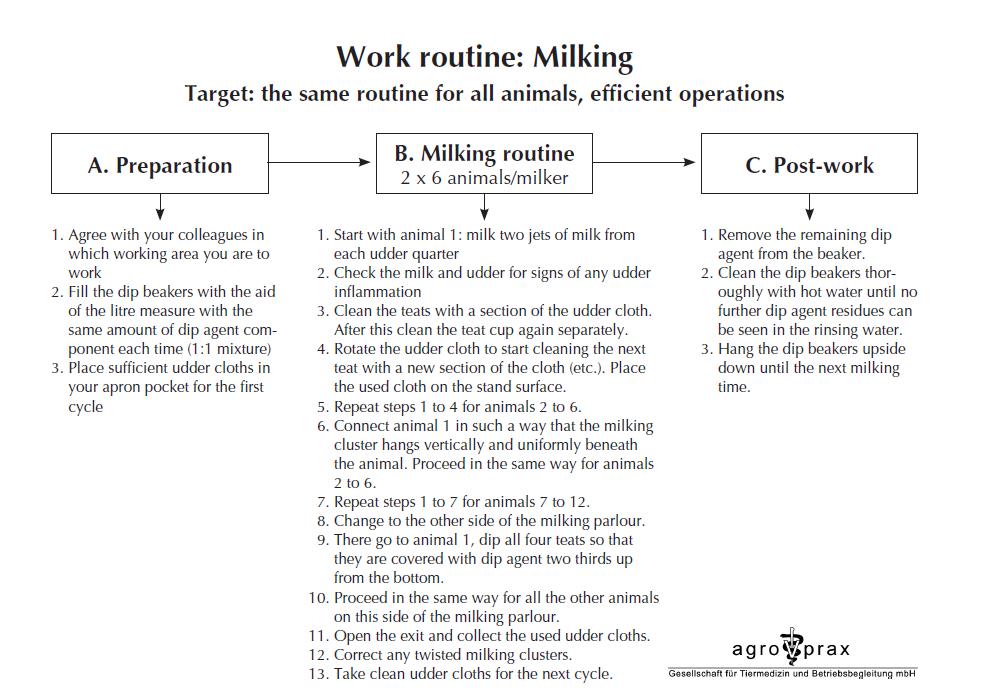
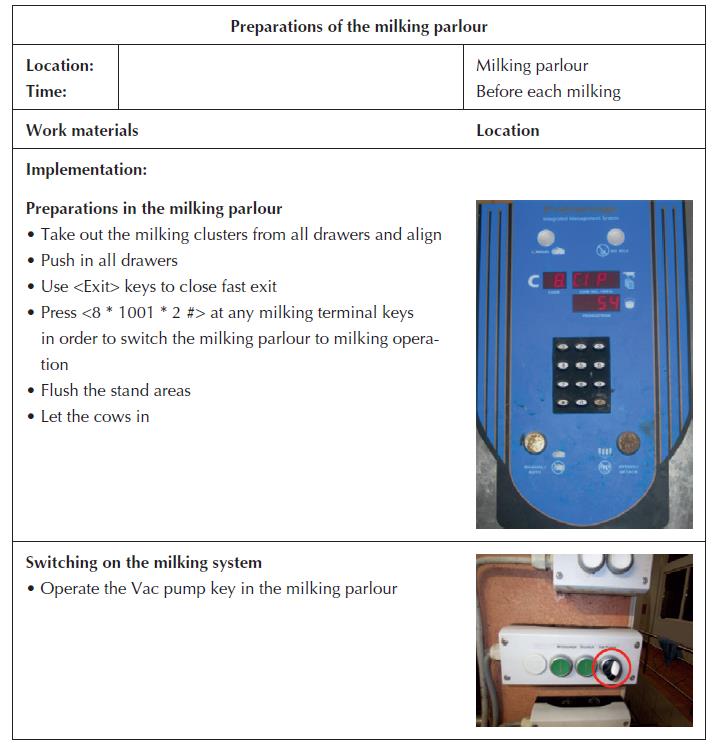
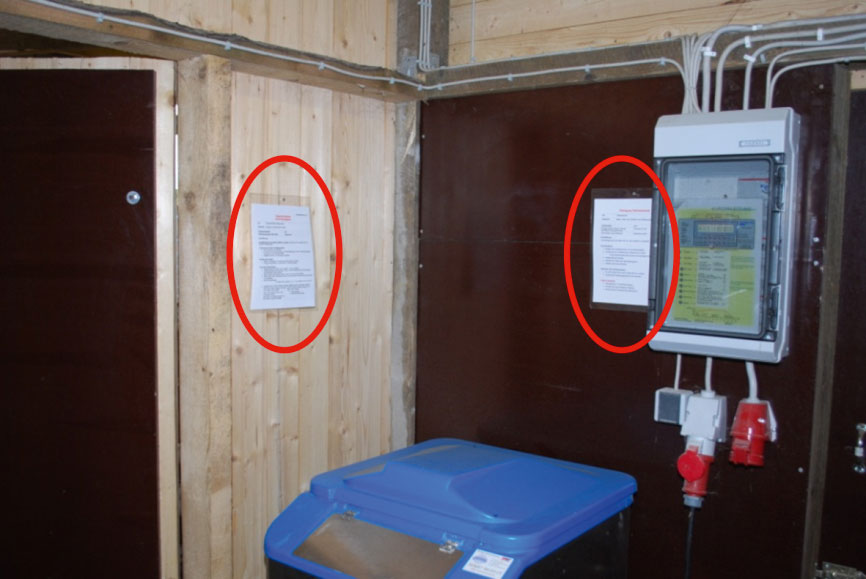
Positioning the SOP
As standard operating procedures are produced for everyday work, they must be posted at the respective workplace of the task to be performed. This is the only way in which staff will regularly read the SOP and perform the work in accordance with the target specifications of the farm manager. Moreover, SOPs are not static documents – instead, they live on being consistently further developed. In addition, all standard operating procedures are filed centrally in the office.
Familiarization and staff training
The standard operating procedures facilitate in particular the familiarization of non-professional or unskilled staff. New staff should first have worked through, understood and taken in the SOP before they start practical work on the farm and apply the SOP. Furthermore, standard operating procedures serve as a basis for staff training sessions. It is thus advisable for staff training sessions to comprise both the repeated explanation of the targets and implementation of the SOP on the farm, and additional further specialist information for the respective work area. The intervals between staff training sessions should be selected depending on the respective tasks.
Monitoring
True to the motto “trust but verify”, consistent implementation of the SOP on the farm should be monitored regularly. There are various ways of monitoring. Primarily animal health and animal behaviour should be observed and the SOP checked for its objective. Alongside staff assessment discussions and unannounced visits of the farm manager to the respective function areas, fixed monitoring points can also be established in the individual areas, for example checking of the milk filter, checking of the milking times of the individual animals via the herd management program, or of feeding via the weighing machine at the feeder-mixing wagon.
7. Communication – “Uninformed staff make the most expensive decisions”
Alongside structuring of the work organization and consistent implementation on the farm, communication is critically important for the success of the farm. Once a year the farm manager should conduct “staff appraisal” discussions in which the personal goals for each staff member are defined, problems addressed, and where questions and wishes can be discussed. The farm manager must prepare the staff appraisement well and conduct the discussions without any rush. The results must be documented in writing and signed by both parties.
Ideas for the staff appraisement
1. Review (ACTUAL SITUATION)
2. Scope of tasks
3. Self assessment
4. Wish for change?
5. Relationship to colleagues, staff and the farm manager
6. Flow of information and work climate
7. Recognition and criticism (too much/too little)
8. Suggestions for improvement and outlook
9. Target agreement (TARGET SITUATION)
10. What can/should be changed with regard to the individual review points
Depending on the area of work, daily, weekly or monthly team meetings should be held. It is crucial that both a clear time frame is specified and discussions are chaired efficiently. Written key words or an agenda can help to keep to the main theme.
Guide for a successful team meeting
1. Start punctually – ignore those who come too late
2. Give a motivating welcome – thank staff for appearing punctually, explain the time frame and organizational details of the meeting
3. Farm manager’s part – present results, address problems, agree targets
4. Staff part – present results, address problems, document targets
5. Conclusion – set down agreements and areas or responsibility in writing
8. Conclusion
The quality of work on a dairy farm can be assured by introducing structured work organization. This is a prerequisite for good animal health, a high performance level, efficient deployment of labour and cost efficiency on the farm. Furthermore, introducing structured work organization will reveal potentials for improving efficiency and create space for other work or for leisure time. Good work organization cannot prevent shift and weekend work, but it can offer regular working times and clear tasks and make the dairy farm an interesting employer.
The introduction and successful implementation of structured work organization depend on the farm manager knowing and continuously developing his operative goals and disciplining himself and his staff to activate the structures introduced every day.
© Reproduction and transfer of individual sections of text, drawings or photos (including for the purpose of teaching) and the provision of the Expert Knowledge Series 450 in whole or in part for viewing or downloading by third parties only with the prior approval of DLG e.V., Marketing Service Department, Eschborner Landstraße 122, 60489 Frankfurt am Main, Germany, tel. +49 69 24788-209, M.Biallowons@DLG.org




